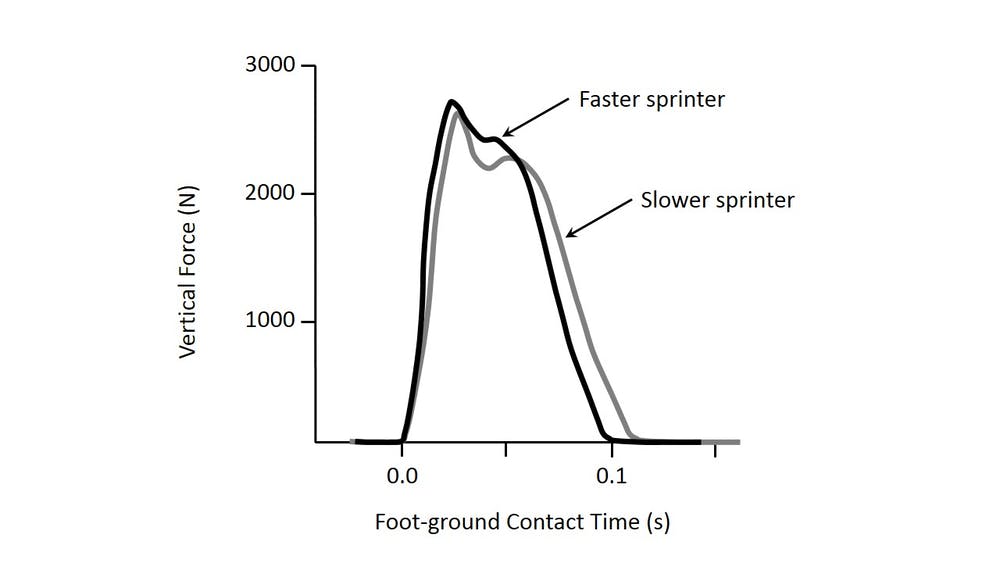Introduction
During sprint races among sportspeople, the most crucial emphasis is placed on the time for which an athlete can run. A short distance does not mean easy performance professional sprinters must demonstrate incredible coordination and speed performance to be the first among their competitors. Every hundredth of a second is of enormous importance, and studies show that there are specific anatomical patterns in this environment. This research work aims to discuss anatomical factors that directly affect the performance of sprinters.
Sprint Anatomy
There is no doubt that among the two athletes involved in a sprint, the one with the more beneficial body anatomy will have the advantage. At the dawn of the sport’s development, it was thought that the fundamental formula for achieving efficiency in races was a high frequency of leg movements with an athlete’s high height. It was assumed that a high sprinter would spend significantly more time and distance at the same speed as a slower athlete. However, research shows that height is not the only factor behind high performance among elite sprinters (Hennessy, 2017). Even athletes with average or low height rates can win. In addition, high stature can even be a significant disadvantage when it comes to instantaneous body coordination and acceleration.

Formula 1. The dependence of the runner’s speed on the frequency of steps, the average force applied to the ground, body weight, and contact length (Tuttle, 2018)
In addition to height, the athlete’s weight makes a significant contribution to achieving high results. The vast majority of studies confirm the need for a sprinter to be free of excess fat because, as shown in formula 1, bodyweight is inversely proportional to speed. Another important indicator is the repulsive force with which the lifter acts on the stadium track (Ae, 2017). It seems evident that the higher the ground force of the sprint, the faster the movement is. However, it is impossible to achieve the maximum force and expect ideal results because there is a limit to the force. Blazevich is further developing this issue and shows that the key to success in races is to generate more forces in less time, as shown in Figure 1.

An important characteristic is the ability to stabilize the body during a sharp movement by shortening the muscles. First of all, it should be noted that studies have repeatedly pointed to the differences in the anatomical structure of proximal leg muscles — the volume and length of muscle fibers are more noticeable when tested with sprinters (Bex et al., 2017; Aikawa et al., 2020). Nevertheless, the structure of the foot bones also has a significant effect on achieving faster speed characteristics. Although the nature of the cause-and-effect relationship between foot length and high performance is still unknown, Tanaka et al. (2017) show that long bones in the foot are advantageous for the athlete. In terms of muscular development of the arms, the limbs’ anatomy implies a low mass — this will help less effort to move the arms to stabilize the body.
An athlete with large muscle volume, long legs, and low body weight will use more energy to achieve high speeds. Thus, the athlete breathes more actively while running, allowing their heart to pump more blood. Moreover, during the race, lactate production begins to exceed its neutralization rate, which is characterized by the activation of the anaerobic energy generation process (Mangini & Fábrica, 2016). For example, elite athletes have an increased content of lactate or lactate degradation products in their biochemical blood analysis.
Conclusion
It is known that anatomical factors play an essential role in achieving the high results of sprinters. Research on this issue is continuing, but the determinants of an effective race are already apparent. Typically, these include developed muscles, lack of excess weight, higher height at higher step frequencies, good blood circulation, and increased lactate levels in the blood. In general, these indicators do not rule out winning an atypical athlete, but statistical studies show such an anatomical portrait of an elite sprinter.
References
Ae, M. (2017). Sprint Running: Running at Maximum Speed. In M. Bertram & S. Wolf (Eds.), Handbook of Human Motion (pp. 1-29). Springer.
Aikawa, Y., Murata, M., & Omi, N. (2020). Relationship of height, body mass, muscle mass, fat mass, and the percentage of fat with athletic performance in male Japanese college sprinters, distance athletes, jumpers, throwers, and decathletes. The Journal of Physical Fitness and Sports Medicine, 9(1), 7-14. Web.
Bex, T., Iannaccone, F., Stautemas, J., Baguet, A., De Beule, M., Verhegghe, B.,… & Derave, W. (2017). Discriminant musculo‐skeletal leg characteristics between sprint and endurance elite Caucasian runners. Scandinavian Journal of Medicine & Science in Sports, 27(3), 275-281. Web.
Blazevich, A. (2016). What makes a winning sprinter? The Conversation. Web.
Hennessy, L. (2017, January 12). Physical characteristics of sprinters and runners. Setanta College. Web.
Mangini, F. L., & Fábrica, G. (2016). Mechanical stiffness: a global parameter associated to elite sprinters performance. Revista Brasileira de Ciências do Esporte, 38(3), 303-309. Web.
Tanaka, T., Suga, T., Otsuka, M., Misaki, J., Miyake, Y., Kudo, S.,… & Isaka, T. (2017). Relationship between the length of the forefoot bones and performance in male sprinters. Scandinavian Journal of Medicine & Science in Sports, 27(12), 1673-1680. Web.
Tuttle, W. M. (2018). Relationship of maximal strength and relative stride length in sprinters (Publication No. 10840459) [Doctoral dissertation, Indiana State University].